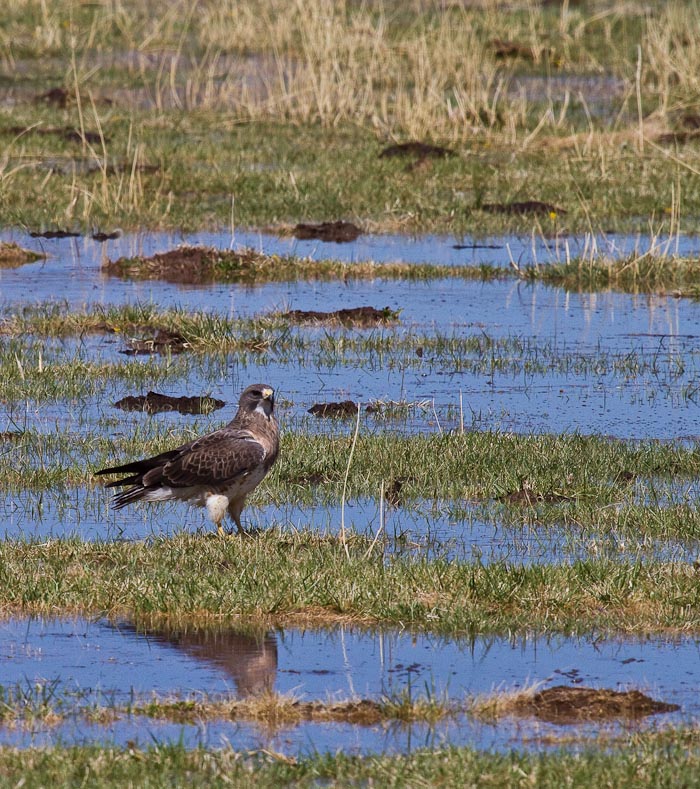Tuesday, April 20, 2010 - Bosque Birdwatchers RV Park, San Antonio NM
< previous day | archives | next day >

Swainson's Hawk, San Antonio NM, April 11, 2010
An irrigating opportunity
Run some irrigation water into the cow pasture and the little critters thriving amongst the piles of nutrients run for their lives. The local birds of prey are having a field day - and so am I. It's been a good chance for me to get a few more photos on my daily walks. We like it.
I'm still at it
Yesterday I set out to reformat this site to center on a wide browser window and the project is coming along nicely but you may see some strange behavior here from time to time.
It's taken me a while to figure out a site navigation scheme to replace the links I had in the left sidebar. The Google ads over there I just dropped - I'm not sure how much having a third ad over there was contributing to the pretty consistent dollar-a-day Google has been paying me for years now but I guess we'll find out. It's nice to have that bit of revenue to offset my site hosting costs but it's not enough to worry about. Moving the link to my Amazon store with my camera kit from the sidebar up to the header above the daily photo I'm not too happy with - it moves the photo down the page too far. Gotta rethink that one.
Night camp
Site 16 - Bosque Bird Watcher's RV Park, San Antonio NM
- This is a basic, small Mom & Pop RV Park with full hookups.
- Verizon cell phone and Broadband service are available here with a strong signal.
- Locate Bosque Bird Watcher's RV Park on my Night Camps map
- Click for Google street view
- Check the weather in San Antonio NM
Something Useful Can Be Artful
A life, I believe - lived well and openly - with a certain sort of careful attention to form and function - creates art - or, at the very least, inspires it. I believe that art is contained in the ordinary events, that the small things we see and hear and learn everyday provide opportunities to explore parts of ourselves or our society in a way that can actually produce art. Whether it is a story you leave behind or one you take with you, I believe that any given situation is rich with opportunities to participate in the creation of something useful that can also be artful.
Living Art - Photography By Catherine Jamieson